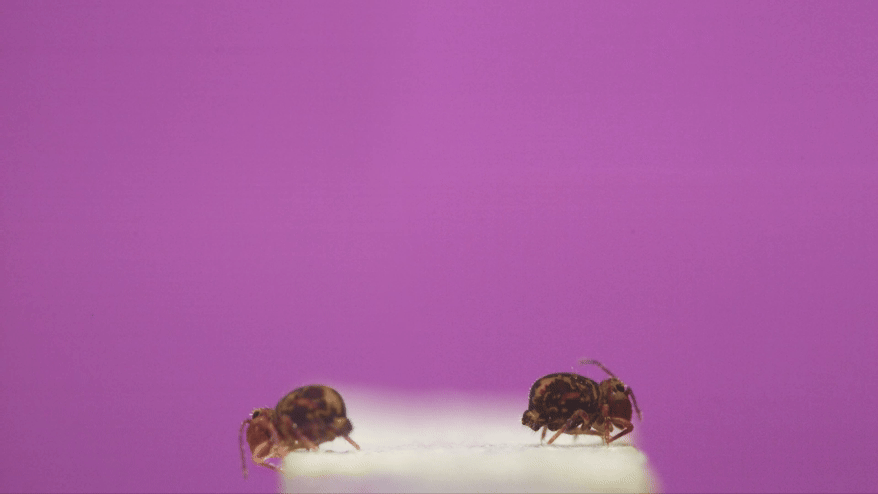Discover How an Arthropod Achieves the World's Swiftest Backflip

Move over, Simone Biles. Nature’s gold medalist for backflips is a millimeter-tall arthropod that can barely straddle the tip of a pencil.
Despite its size, the globular springtail (Dicyrtomina minuta) can vault itself 60 mm in the air, spinning at a rate as fast as 368 times per second, researchers report August 29 in Integrative Organismal Biology. Blink and you’ll miss this super-flipper, though, as its jump lasts just 161 milliseconds, on average.
“Nothing on Earth does a backflip faster than a globular springtail,” says biologist Adrian Smith of North Carolina State University in Raleigh. “They’re extraordinary, but also ordinary.” The arthropods that Smith used in the study “are literally from my backyard,” he says.
Globular springtails jump so fast that they often seem to simply vanish, Smith says, a useful trick for evading predators. To reveal the secrets of the arthropods’ escape acrobatics, he and biomechanist Jacob Harrison of Georgia Tech in Atlanta analyzed high-speed footage of more than a dozen springtails from liftoff to landing.
Science News is collecting reader questions about how to navigate our planet's changing climate.
What do you want to know about extreme heat and how it can lead to extreme weather events?
Liftoff starts with a thump, as the springtail lets loose a springlike appendage called the furca from its underbelly (SN: 11/7/22). That thump propels the arthropods backward as fast as 1.5 meters per second, on average, the researchers found. While airborne, the globs spin anywhere from 14 to 29 times.
Some flights end less than gracefully, with springtails crashing back to Earth and bouncing about until they come to a stop. More often, the arthropods stuck the landing by deploying a sticky tube typically used for grooming, the team found. “It’s a sort of anchor that pulls them to their feet so they can get on with their day,” Smith says.
“We sometimes get told that the only exciting parts of nature are fossilized in the ground or hidden in a tropical rainforest somewhere,” Smith says. To him, these springtails show that everyday organisms are pulling off incredible feats all around us, we just have to look.
Questions or comments on this article? E-mail us at [email protected] | Reprints FAQ
A.A. Smith and J.S. Harrison. Jumping Performance and Behavior of the Globular Springtail Dicyrtomina minuta. Integrative Organismal Biology. Published online August 29, 2024. doi: 10.1093/iob/obae029.
Jonathan Lambert is a former staff writer for biological sciences, covering everything from the origin of species to microbial ecology. He has a master’s degree in evolutionary biology from Cornell University.
We are at a critical time and supporting climate journalism is more important than ever. Science News and our parent organization, the Society for Science, need your help to strengthen environmental literacy and ensure that our response to climate change is informed by science.
Please subscribe to Science News and add $16 to expand science literacy and understanding.




